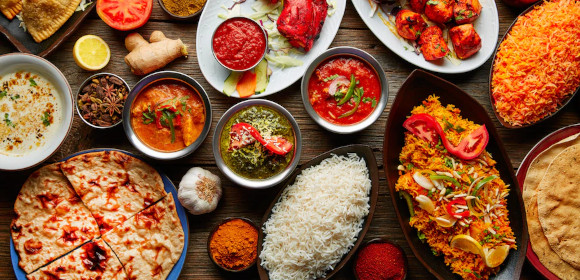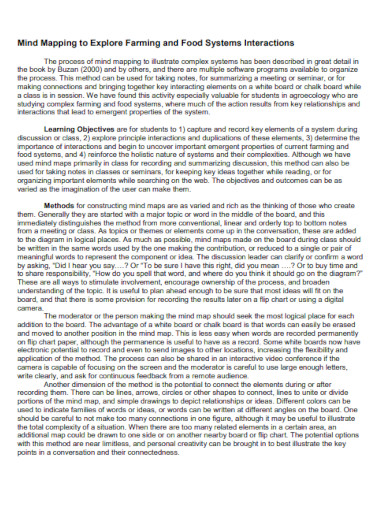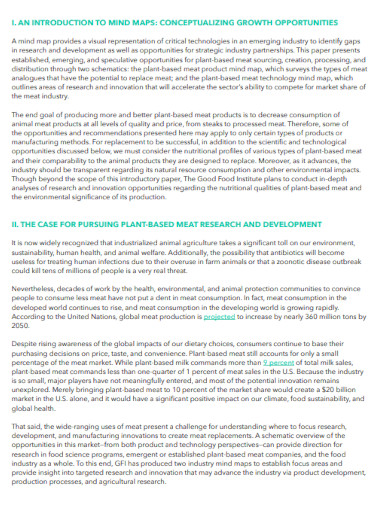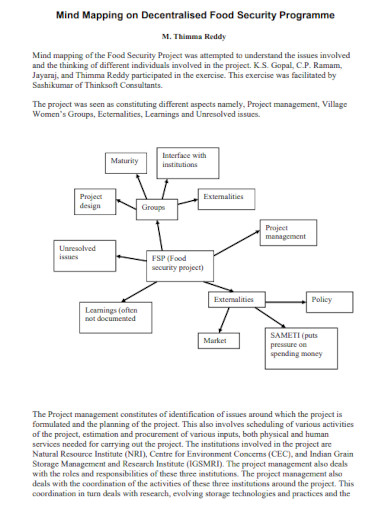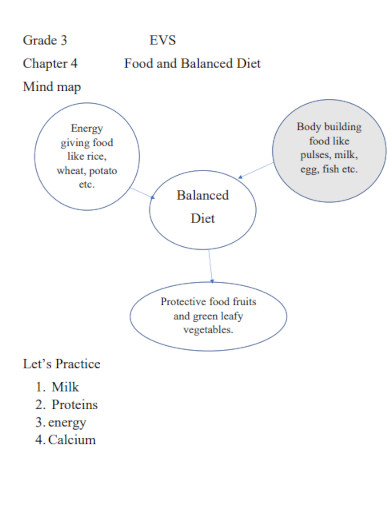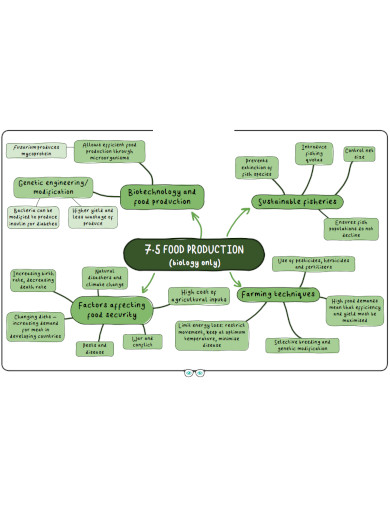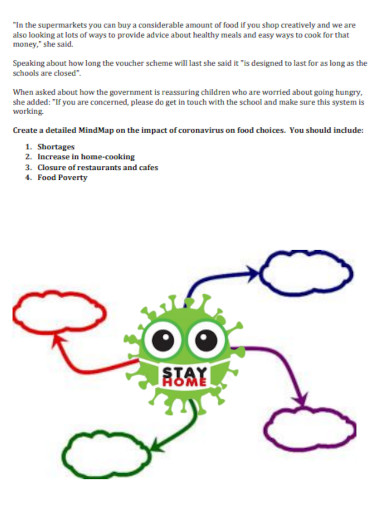Food is the primary source of energy to sustain on planet Earth. What if every kind of food available is healthy? Well, this is not true, as we all know, each meal has different components in terms of proteins, fats, minerals, vitamins, and carbohydrates. Mind mapping is a wonderful technique that results in precise and quick work with fewer errors. It also helps in visualizing the main idea of any kind of project that you are working on.
10+ Food Mindmap Samples
1. Simple Food Mind Map Template
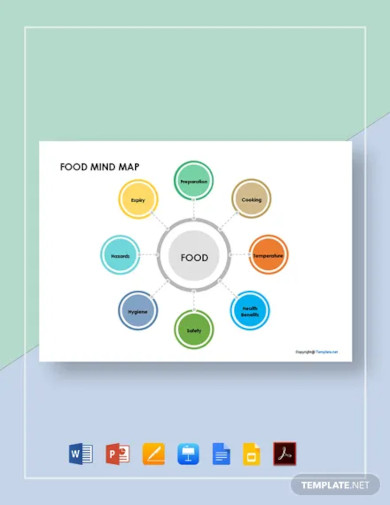
2. Sample Food Mind Map Template
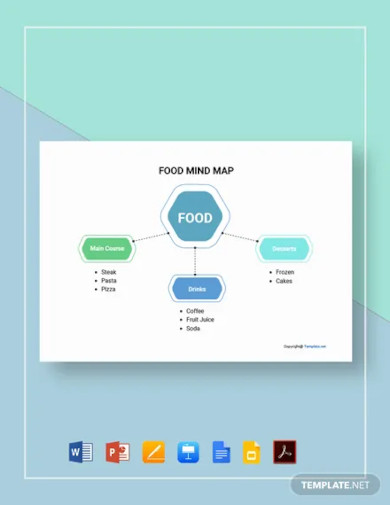
3. Food Waste Mind Map Template
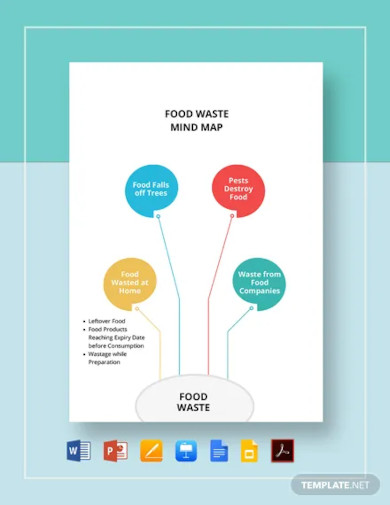
4. Food Systems Mindmap
5. Food Meat Mindmap
6. Food Mindmap for Class
7. Food Security Programs Mindmap
8. 3rd Grade Food Mindmap
9. Food Production Mindmap
10. Coronavirus on Food Choices Mindmap
11. Food and Digestion Mindmap
What is a mind map?
A mind map is an illustration with a keyword or phrase in the middle, lines connecting from the middle to a main idea, and even more lines connecting from main ideas to details. Building out from the center, mind maps are often said to look like sunbursts or even spiderwebs. Mind maps can have more than three levels (middle, main ideas, and details), but most stick with this model.
Human brains don’t organize all the information we know in one strict hierarchical tree. Instead, associations radiating out (or in) from different connection points help our minds navigate a vast information pool to make decisions quickly. When written down, these associations create a visual tool known as a mind map, a powerful communication and creativity tool used by many marketing project management teams.
How to make a mind map
You may already be familiar with this tool if you’ve ever: gone to public school, been tasked with writing an academic essay, etc.
Here’s how to create a mind map in five simple steps:
- Choose the topic of the mind map and place it in the middle of the drawing
- Come up with three to five+ main ideas, then evenly space them in a circular formation around the mind map topic
- Draw a line from the mind map topic to each main idea
- Brainstorm supporting details such as ideas, tasks, and questions for each main idea
- Draw lines connecting each main idea to its supporting details
FAQs
What are the popular types of mind maps?
- Circle map
- Flow map
- Bubble map
- Double bubble map
- Multiflow map
- Tree map
- Bridge map
- Brace map
- Fishbone map
What food topics should be made on a mind map?
- Types of food
- Healthy diet plan
- Nutrition count of different food
- Calories present in different types of food
- Variety of cuisines around the world
- Popular snacks
- Different desserts
What are the 10 healthy eating tips?
- Start with breakfast – every day! …
- Eat regular meals – at least 3 each day. …
- Have smarter snacks – and only if you need them. …
- Be mindful – take your time and notice what you eat. …
- Portion sizes matter. …
- Think about what you drink – …
- Fill up on vegetables and fruit – 5+ a day. …
- Have whole grains when you can.
What are the 7 things you need for a balanced diet?
There are seven essential factors for a balanced diet: carbs, protein, fat, fibre, vitamins, minerals and water.
What are the 6 diet planning principles?
They include balance, variety, moderation, adequacy, calorie control, and nutritional density.
What are the five food groups?
The five food groups are Fruits, Vegetables, Grains, Protein Foods, and Dairy. The 2015-2020 Dietary Guidelines for Americans emphasizes the importance of an overall healthy eating pattern with all five groups as key building blocks, plus oils
What is the difference between organic and regular food?
Compared with conventionally grown produce, organically grown produce has lower detectable levels of pesticide residue. Organic produce may have residue because of pesticides approved for organic farming or because of airborne pesticides from conventional farms. The most commonly purchased organic foods are fruits, vegetables, grains, dairy products and meat.
Related Posts
Retirement Speech Samples & Templates
Weekly Schedule Samples & Templates
Contractual Agreement Samples & Templates
FREE 9+ Amazing Sample Church Bulletin Templates in PSD | PDF
Sample Business Card Templates
Sample Cashier Job Descriptions
Questionnaire Samples
FREE 10+ Sample HR Resource Templates in PDF
FREE 49+ Sample Job Descriptions in PDF | MS Word
FREE 23+ Sample Event Calendar Templates in PDF | MS Word | Google Docs | Apple Pages
Company Profile Samples
FREE 10+ Leadership Report Samples [ Development, Training, Camp ]
FREE 24+ Sample Payment Schedules in PDF | MS Word
FREE 10+ Return to Work Action Plan Samples in PDF | DOC
Autobiography Samples & Templates
